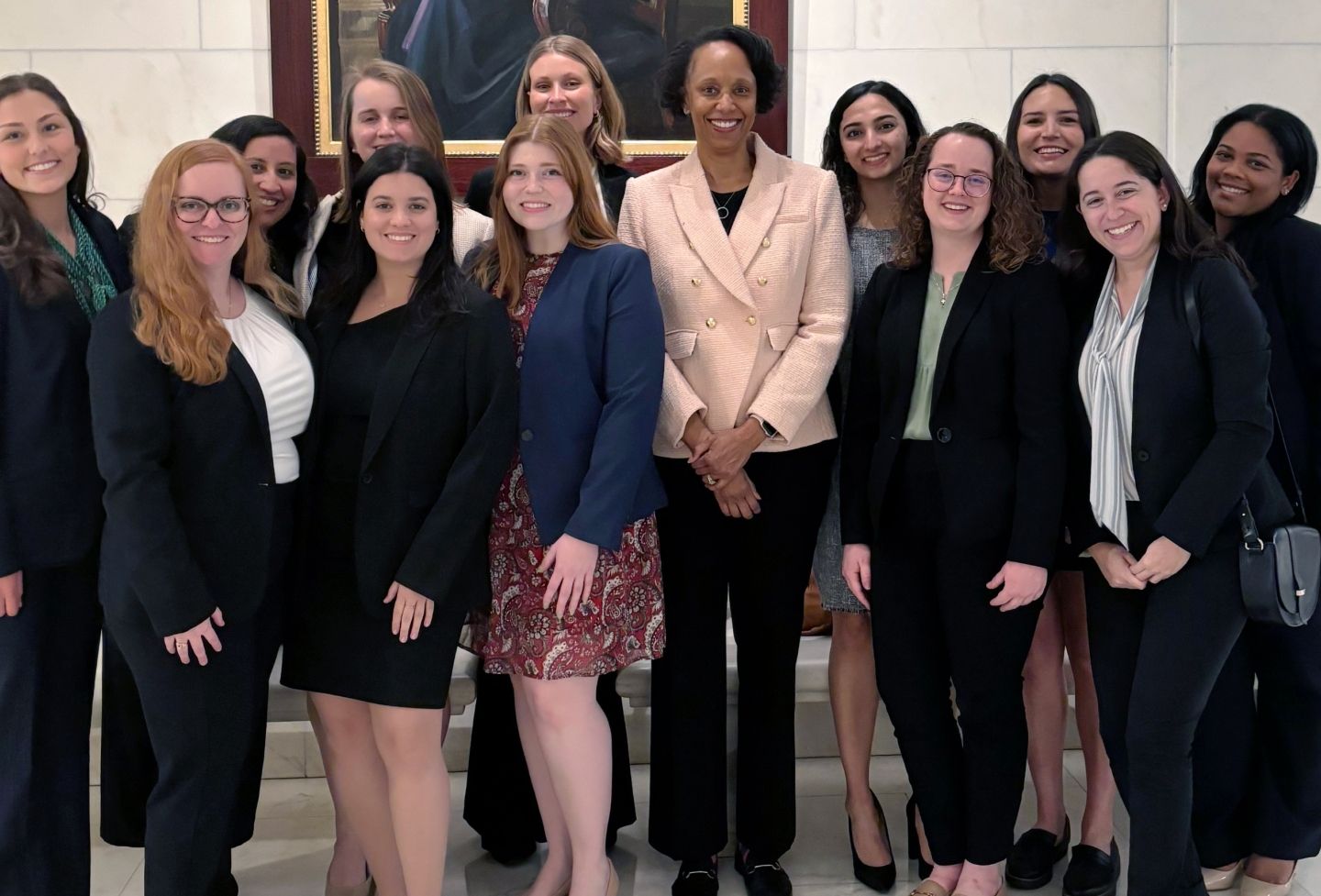Food markets rocked by the COVID-19 pandemic are taking a second major blow from the conflict in Ukraine. Christopher A. Ripple ’08, a lecturer at the University of Virginia School of Law who teaches the course American Food Governance, explains how global food insecurity could expand and why food markets are so vulnerable.

Give us the big picture. What is the possible impact of the conflict in Ukraine on food markets?
Our food system relies on the production of a relatively small number of large food commodity exporters. Ukraine and Russia are two of the most significant. As a result of the war, harvested crops in Ukraine will not make it to market, and Ukrainian farmers will be prevented from planting for the next harvest. Russia is banning exports of some commodities and its future exports are in doubt because of sanctions and uncertainties about whether its farmers will have access to seeds and other inputs. Commodity markets are responding with volatility and price increases reminiscent of a global food price crisis in the mid-2000s, prompting concerns about whether we are entering a similar crisis.
Fertilizer and energy prices also are rising because of the war in Ukraine. How should we understand these markets in relation to the impact on food systems?
Russia and Belarus are significant exporters of fertilizers relied on by farmers across the world. Russia has restricted exports of its own fertilizers since the invasion and sanctions against Belarus will contract the fertilizer export market further. Fertilizers will be more expensive, prohibitively so for some farmers, and in some cases they will not be available. If this leads to reduced use and lower crop yields, this will compound the food security risk from the war.
The impact of the conflict on energy markets is also significant. Russia is a significant exporter of crude oil and natural gas. At a general level, industrialized agriculture and its global supply chains depend on fuel. Higher fuel prices from the war mean higher production and transport costs and higher food prices. But the impact is also important in two other respects. First, natural gas is not simply a fuel in the making of fertilizers; it is an ingredient in a chemical process that relies on hydrogen from natural gas to convert atmospheric nitrogen into a form that can be used by plants. In Europe, which depends on Russia for natural gas, large fertilizer companies are reducing production in response to gas prices, which places additional stress on fertilizer and food markets. Second, high oil prices are significant because they make otherwise costly alternative energy sources, like ethanol and biodiesel, more competitive. Because these biofuels rely on food crops like corn, soy, sugarcane, and palm oil, high oil prices can result in the diversion of food crop land to biofuel production, depleting food-related yields even further.
What historical food price crises are helpful to consider by comparison?
Two past food price crises are helpful references. In the early 1970s, prices rose rapidly, peaking in 1974 before settling at a level higher than before the spike. Some of the causes were so extraordinary that they are difficult to remove from context — massive grain sales to the Soviet Union of a significant portion of the U.S. wheat crop; drastic moves by OPEC to quadruple the price of oil and embargo oil sales to the United States. Other factors were less extraordinary — changes in monetary policy that devalued the dollar and created a surge in demand for U.S. agricultural exports; changes in farm policy that decreased production acreage and reduced government-held food reserves; bad weather and poor production in key growing areas that resulted in a decline in global food production for the first time in several decades. The bottom line is that the price spikes resulted from multiple factors that were easy to identify, none of which necessarily reflected permanent or long-term shifts in the global food system.
Fast forward to late 2006. Food commodity prices spiked and stayed elevated until falling in 2008, only to surge again in 2010-11. In certain respects, the crisis reflected a similar confluence of factors as the spike in the 1970s — weather-related yield declines, high energy prices, low food reserves, and a weak U.S. dollar. But other factors also played a role, and they reflected potentially permanent or long-term shifts in the global food economy that were new since the 1970s: increased financial speculation in agricultural commodity markets; government biofuel mandates that further coupled food and fuel prices; and increased demand from developing nations like China and India for grains to use as feed for meat consumption. The food system was more globalized, more dependent on the production of large exporters, and potentially more vulnerable to systemic shock from a broader range of market forces. Instability resulting from the food price increases contributed to unrest in countries across the world.
How does the current situation compare to these past food price crises?
Factors that contributed to both past crises are generally present here — high energy prices and poor production in key growing areas, including China, which is anticipating its worst wheat crop in history. And the long-term stresses on the food system that were evident in the mid-2000s remain challenges today. What is more troubling about the current situation, however, is that food and fertilizer prices reached alarming levels even before the invasion of Ukraine, with supply chains still recovering from the pandemic. Against this backdrop, the potential cascade of food system impacts from the war in Ukraine is difficult to overstate.
Or maybe I should put it another way. The last food price crisis was referred to as a “silent tsunami” that would affect every continent on Earth. What happens if most of the conditions that led to that last tsunami begin to align during a global pandemic, and then a nuclear power cuts off a key breadbasket of the world? This is the risk we must now consider.
What food shortages in particular will result from the war in Ukraine?
Russia and Ukraine are two of the largest exporters of wheat, maize (corn), rapeseed, barley and sunflower oil. Close to 50 nations are dependent on Russia and Ukraine for over 30% of their wheat imports. But when we consider shortages or supply impacts, the real takeaway is that the price impacts and volatility will extend to other food commodities, and these impacts will be particularly severe in regions already faced with significant levels of food insecurity. The price impacts will extend to other commodities as importers shift demand to other products and other exporters in search of potential substitutes (for example, as importers turn to palm or soy oil to replace Ukrainian sunflower oil). These impacts will be particularly severe in some of the most food-insecure regions of the world not only because they rely directly on Russia and Ukraine for a high proportion of their food imports, but also because they are generally more vulnerable to price spikes and volatility. Eritrea, for example, historically one of the most food-insecure nations in the world, imports nearly all of its wheat from Russia and Ukraine. As prices rise across all food commodities, low-income households in net food importing countries will be most severely affected. They spend a greater proportion of their income on food, and staple food commodities like corn, wheat and rice make up a greater proportion of their diets. In the most dire situations, the risk will be famine. In recent years, the U.N. World Food Programme, the most important mechanism for distributing global food aid, has purchased half of its wheat from Ukraine.
All of this, of course, underscores the reality we risk losing sight of by characterizing the current situation as a “crisis” caused by the war. The food security of millions of people is currently threatened because the global food economy leaves them vulnerable every day to forces over which they have no control. The war in Ukraine did not create that vulnerability. It was created by policies of planned dependence. What we are witnessing is design failure. We are witnessing the risk of foreseeable, systemic collapse.
How could this affect exporters of similar foods?
The relationship between food, fuel and fertilizer prices makes this difficult to predict. It can be easy to assume that exporters of the same or substitute commodities will benefit from redirected demand resulting from the loss of Ukrainian and Russian imports. This will happen to a degree for exporters of some commodities in the immediate term, but the longer-term reality is more complicated. Farmers plant crops months before a harvest. They can’t simply ramp up production in response to sudden demand as you might at, say, a factory. Take wheat as an example. Most wheat grown in the United States is “winter wheat,” planted in the fall and harvested the following summer, so the current crop was planted before the invasion. There’s no immediate-term response that can make up for the loss of Black Sea exports. As for planting decisions going forward, higher prices for wheat and corn will be undercut by higher fertilizer and fuel prices. So far at least, it’s not clear that farmers intend to respond to tighter wheat or corn markets by planting more acres of those crops. In fact, the opposite might be true. According to USDA’s most recent survey of farmers’ planting intentions since the invasion, farmers intend to plant more soybeans (which require less fertilizer) and less spring wheat and corn, notwithstanding the potentially high prices for those crops because of the war in Ukraine. On top of all of this, some large exporters will be hesitant to export crops they have in reserve out of fear that they will have inadequate food for domestic consumption over the long term.
You and your students recently discussed these issues in class. Can you describe what resulted?
In my course, we consider how laws and legal rules contribute to the governance and organization of the industrial food economy. As the invasion began and food commodity prices began to soar, we were discussing the food price crises in the 1970s and mid-2000s as part of our consideration of the long-term implications of foreign food aid and surplus management programs. So it made sense to bring the world into the classroom, so to speak. The assignment was straightforward: research the food system implications of the war, both generally and with a focus on a particular region. One of my students considered the impact of the loss of Ukrainian feed imports on the European meat and dairy industry, including whether Europe would step back from recently adopted sustainability initiatives in order to boost agricultural production. Another student considered whether Brazilian efforts to secure fertilizer locally would result in increased mining and destruction of indigenous land. There was no shortage of good ideas — there never is with UVA Law students — but the goal wasn’t to brainstorm how we can manage or get out of the immediate crisis. The goal was to give the students a chance to learn about how sweeping an impact the war will have on food systems across the world, and to reflect on how an industrial food economy that laws helped to design could be so vulnerable in the first place.
What issues should we keep an eye on?
A few issues in the immediate term are important to watch. The first is the extent to which countries respond to rising commodity prices by restricting food exports or making hoard purchases on global markets. This was a factor in driving already high prices higher during the last food price crisis, and a number of countries are engaging in this behavior since the invasion. A second issue to watch in the immediate term is whether countries like the United States increase foreign food aid to food-insecure regions most impacted by rising commodity prices. Even apart from humanitarian concerns, this aid is needed to minimize the risk of political unrest that we know is associated with food insecurity, including during the last food price crisis.
In the intermediate term, we will hear growing calls this year to increase agricultural production to make up for the loss of Black Sea exports. In the United States, that conversation is focused on 23 million acres that currently are enrolled in a program created in the 1980s called the Conservation Reserve Program, which pays farmers to enter long-term contracts to idle land and implement conservation measures. The USDA is under pressure to allow farmers to remove this land from the program without penalty and bring it back into production. This is a bad idea. CRP acreage is environmentally sensitive land with more marginal productive capacity. In many cases it is not feasible to bring the land back into production quickly, if at all, and the environmental costs are significant. In any event, we have enough food to feed the world. Millions are threatened with an increasing risk of food insecurity because they can’t access food without relying on imports from a small number of wealthier nations. We need a solution that addresses that problem, not a “let me try to help you without putting down my cheap bacon cheeseburger and super-sized sweetened soda” approach to global food security.
That is the long-term issue that the war in Ukraine requires us to confront. In the wake of the last food price crisis, the United States launched an initiative called Feed the Future, an all-of-government approach to nonemergency foreign aid that focuses on addressing the root causes of food insecurity through public-private partnerships and investments in agricultural production in some of the world’s poorest countries. It was an acknowledgement that increased dependency on food imports in the decades leading up to the crisis made net-importing countries more vulnerable to price shocks in commodity markets, and that this was a threat to world security. We need more of this type of commitment. But we also need to examine how subsidies and supply-driven, export-focused farm and trade policies helped create a system that leaves so many people across the world in a position of food dependency. The war in Ukraine did not create that vulnerability. We designed it. We built it right into the industrial food system.
Related News
- 4.8.22 Conflict in Ukraine Suggests Turning Point for International Cooperation, Professors Say
- 3.16.22 The Financial Squeeze on Russia — and Now, the World
- 3.8.22 Ukraine and the Future of War Crimes
- 2.28.22 From Sanctions to Cyberattacks: What’s Next in the Ukraine Conflict?
- 2.21.22 Professor Says It’s Important To Understand Russia’s Goals in Conflict Over Ukraine
Founded in 1819, the University of Virginia School of Law is the second-oldest continuously operating law school in the nation. Consistently ranked among the top law schools, Virginia is a world-renowned training ground for distinguished lawyers and public servants, instilling in them a commitment to leadership, integrity and community service.


